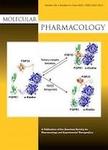版权所有:内蒙古大学图书馆 技术提供:维普资讯• 智图
内蒙古自治区呼和浩特市赛罕区大学西街235号 邮编: 010021

作者机构:McGill Univ Dept Pharmacol & Therapeut Montreal PQ H3G 1Y6 Canada
出 版 物:《MOLECULAR PHARMACOLOGY》 (分子药理学)
年 卷 期:1999年第56卷第3期
页 面:537-544页
核心收录:
学科分类:1007[医学-药学(可授医学、理学学位)] 10[医学]
主 题:钙-钙调素依赖性蛋白激酶类/代谢 碳氧裂合酶类/代谢 DNA-(无嘌呤或无嘧啶位点)裂合酶 DNA结合蛋白质类/药物作用 DNA结合蛋白质类/代谢 胚胎 哺乳动物/代谢 基因 jun HeLa细胞 JNK丝裂原活化蛋白激酶类 MAP激酶激酶4 丝裂原激活蛋白激酶激酶类 氧化性应激/药物作用 磷酰化 蛋白质生物合成 蛋白激酶类/代谢 吡咯烷酮羧酸 大鼠 Sprague-Dawley 噻唑类/药理学 噻唑烷类 转录因子AP-1/代谢 肿瘤细胞 培养的 动物 女(雌)性 人类 小鼠 妊娠 大鼠
摘 要:Activator protein-1 (AP-I) transcription factor DNA binding is induced during transient oxidative stress in the midorganogenesis rat conceptus in culture. L-2-Oxothiazolidine-4-carboxylate (OTC)I a cysteine prodrug, prevented oxidative stress and the induction of AP-I binding activity in the embryo but not in the yolk sac. Because AP-I activity may be a significant determinant of developmental outcome after insult, we investigated the regulation of AP-1 activity in the conceptus. Supershift assays indicated that basal AP-I binding in the embryo was due primarily to JunD, whereas in the yolk sac c-Jun and JunD were important. Under oxidative stress, c-Fos and c-Jun contributed to the AP-1 binding in the embryo;in the yolk sac, a c-fos-shifted complex emerged. OTC protection from oxidative stress did not change the AP-I composition, suggesting that increased AP-I activity was due to post-translational modifications, Changes in AP-I activity in embryos under oxidative stress or with OTC protection were not the result of alterations in the net phosphorylation state of Fos or Jun proteins or of changes in activities of the extracellular signal-regulated kinases 1 and 2 or stress-activated protein kinases. However, immunodepletion of redox factor 1 (Ref-l), a nuclear factor that promotes AP-I binding, eliminated AP-1 activity from embryonic nuclear extracts under both basal and oxidative stress conditions. Therefore, Ref-l plays a critical role in regulating AP-1 activity in the conceptus;it is plausible that Ref-l-mediated modulation of the AP-I stress response is a determinant of embryonic fate.